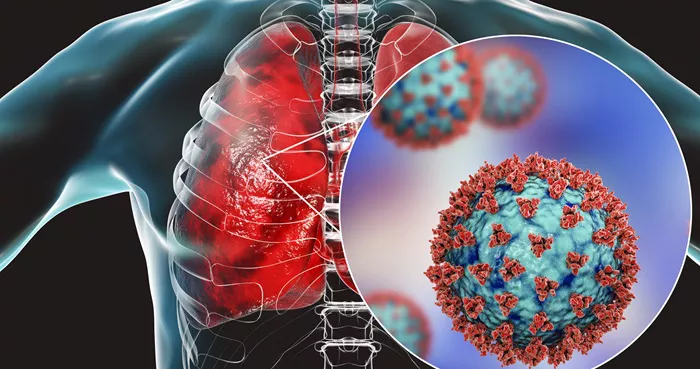Viral heart infections, primarily affecting the heart muscle and the surrounding tissues, pose significant risks to cardiovascular health.
These infections, notably myocarditis and pericarditis, result from various viral agents that initially infect other body parts but eventually impact the heart. Understanding the pathogenesis, transmission routes, and preventive strategies for viral heart infections is critical for managing and mitigating their health consequences.
The Basics of Viral Heart Infections
A viral heart infection typically manifests in two forms: myocarditis, the inflammation of the heart muscle (myocardium), and pericarditis, the inflammation of the lining outside the heart (pericardium). These conditions can weaken the heart, interfere with its electrical system, and reduce its ability to pump blood effectively, potentially leading to heart failure or cardiac arrhythmias.
Pathophysiology
Myocarditis and pericarditis often develop following a viral infection when the virus directly infects the heart or triggers an immune response that inadvertently damages the heart muscle or its surrounding tissues. Common viruses associated with these heart conditions include Coxsackievirus, Adenovirus, Parvovirus B19, and Human Herpesvirus 6. More recently, cases have been associated with the SARS-CoV-2 virus responsible for COVID-19.
In the initial stages of a viral infection, the virus enters the body through the respiratory tract, gastrointestinal tract, or direct contact with infected bodily fluids. Following primary infection, the virus may localize in the heart. Viral replication within cardiac tissues leads to cellular damage either directly through the cytotoxic effects of the virus or indirectly through the immune response it elicits.
SEE ALSO: how to strengthen vascular system
Clinical Manifestations
Symptoms of viral heart infections vary but often include chest pain, fatigue, shortness of breath, and in severe cases, signs of heart failure.
Arrhythmias, which are irregular heartbeats, are also common and can be life-threatening. Fever, a common sign of systemic viral infection, might also be present. The severity of symptoms and the progression of the disease depend on the extent of the heart’s involvement, the type of virus, and the individual’s immune response.
How Do You Get a Viral Heart Infection?
Understanding how viral heart infections are transmitted is crucial for both prevention and control. The viruses that cause these conditions have diverse mechanisms and routes of transmission.
Respiratory Transmission
Many viruses, such as influenza and SARS-CoV-2, spread primarily through respiratory droplets when an infected person coughs, sneezes, or talks. These droplets can be inhaled by others, leading to infection. In some cases, these respiratory viruses can spread to the heart, particularly if the individual has a predisposition or underlying heart conditions.
Fecal-Oral Route
Viruses like Coxsackievirus can also be transmitted through the fecal-oral route. This transmission occurs when particles from an infected person’s stool contaminate food or water, which is then consumed by others. After initial infection, the virus can migrate to the heart, causing myocarditis or pericarditis.
Direct Contact
Direct contact with infected bodily fluids can also lead to the transmission of viruses capable of causing heart infections. For instance, Parvovirus B19, often associated with fifth disease in children, can spread through respiratory secretions or blood. Pregnant women infected with Parvovirus B19 are at particular risk of passing the virus to the fetus, which can lead to myocarditis in utero.
Bloodborne Transmission
Certain viruses, like HIV and Hepatitis C, are primarily transmitted through blood-to-blood contact. These viruses typically cause systemic infections but can also affect the heart either directly by infecting cardiac tissues or indirectly through immune-mediated mechanisms.
Risk Factors And Susceptibility
Several factors can increase the likelihood of developing a viral heart infection. These include:
Immune System Status: Individuals with weakened immune systems, such as those with HIV/AIDS, cancer patients undergoing chemotherapy, and organ transplant recipients, are more susceptible to severe viral infections, including those affecting the heart.
Age and Sex: Young adults and males are generally more prone to myocarditis. However, the reasons for this increased susceptibility remain under investigation.
Pre-existing Cardiac Conditions: People with existing heart conditions are at higher risk of severe complications from viral heart infections.
Genetic Predisposition: There is evidence suggesting that genetic factors may influence susceptibility to viral infections, including those that affect the heart.
Diagnosis And Treatment
Diagnosing viral heart infections involves a combination of clinical evaluation, imaging, and laboratory tests. Symptoms alone can be misleading due to their non-specific nature. Key diagnostic tools include:
Electrocardiogram (ECG): This test measures the heart’s electrical activity and can detect arrhythmias and signs of heart strain.
Echocardiogram: This ultrasound test visualizes the heart’s structure and function, helping to assess any damage or inflammation.
MRI: Cardiac MRI provides detailed images of the heart and can identify inflammation and changes in the heart muscle.
Blood Tests: Tests for cardiac enzymes and markers of inflammation like C-reactive protein (CRP) can support the diagnosis. Specific viral serologies can help identify the causative virus.
Treatment focuses on managing symptoms and supporting heart function. This may include:
Medications: Anti-inflammatory drugs and immunosuppressants are commonly used to reduce heart inflammation.
Antiviral medications may be prescribed if a specific virus is identified.
Lifestyle Adjustments: Rest and limiting physical activity are recommended to reduce stress on the heart during recovery.
Monitoring and Follow-up: Regular follow-up is essential to monitor heart function and prevent long-term complications.
Prevention Strategies
Preventing viral heart infections centers around controlling viral transmission and enhancing general health to withstand infections:
Vaccination: Vaccines are crucial in preventing viral infections, including those that can affect the heart.
Hygiene Practices: Regular hand washing, using sanitizers, and avoiding close contact with sick individuals can reduce the risk of viral infections.
Healthy Lifestyle: Maintaining a healthy lifestyle with balanced nutrition, regular exercise, and managing stress can strengthen the immune system.
Conclusion
Viral heart infections represent a complex interplay between infectious agents and host factors. Their diagnosis and management require a thorough understanding of their transmission, clinical presentation, and the individual’s health status. By combining effective preventive measures with timely medical intervention, it is possible to mitigate the risks associated with these serious conditions and promote better cardiovascular health.


